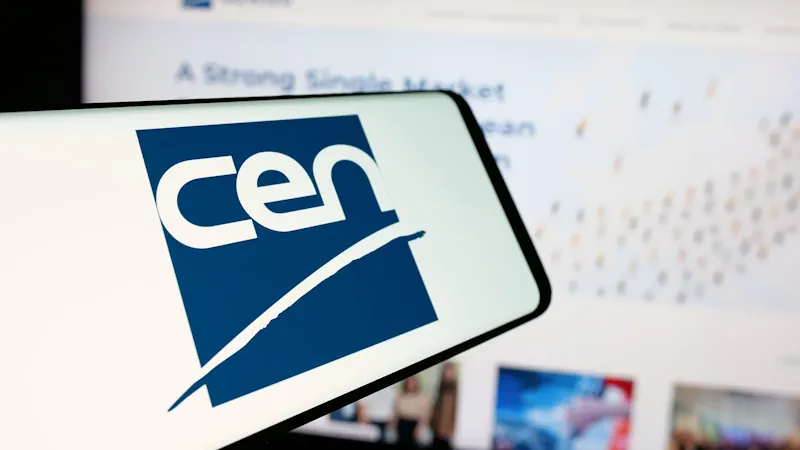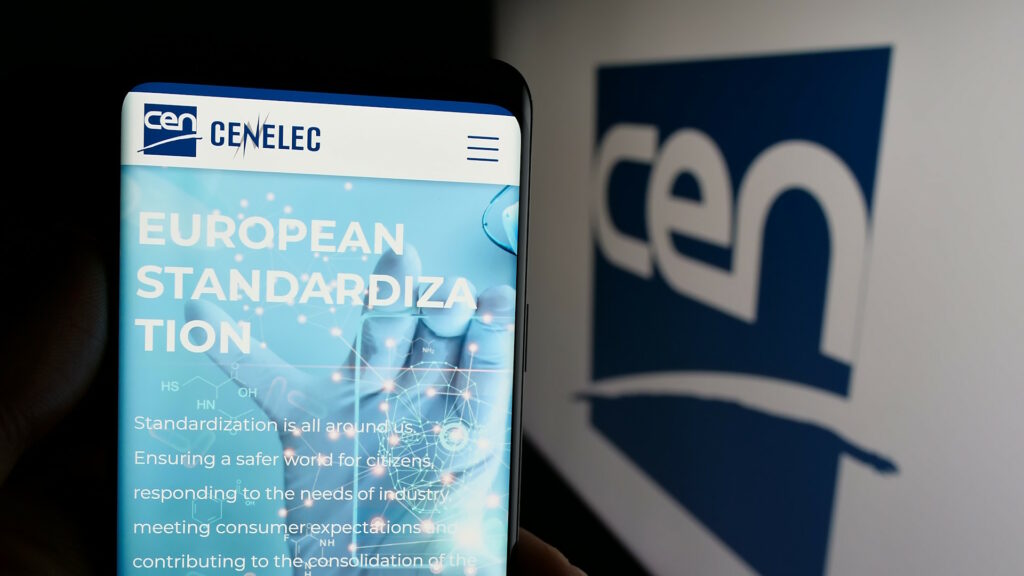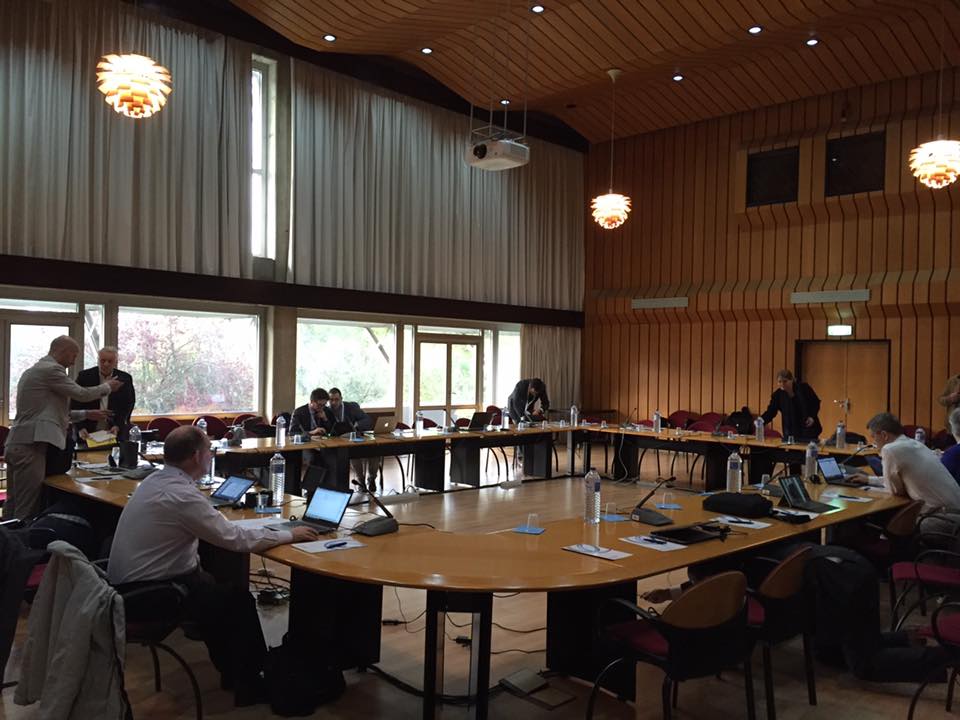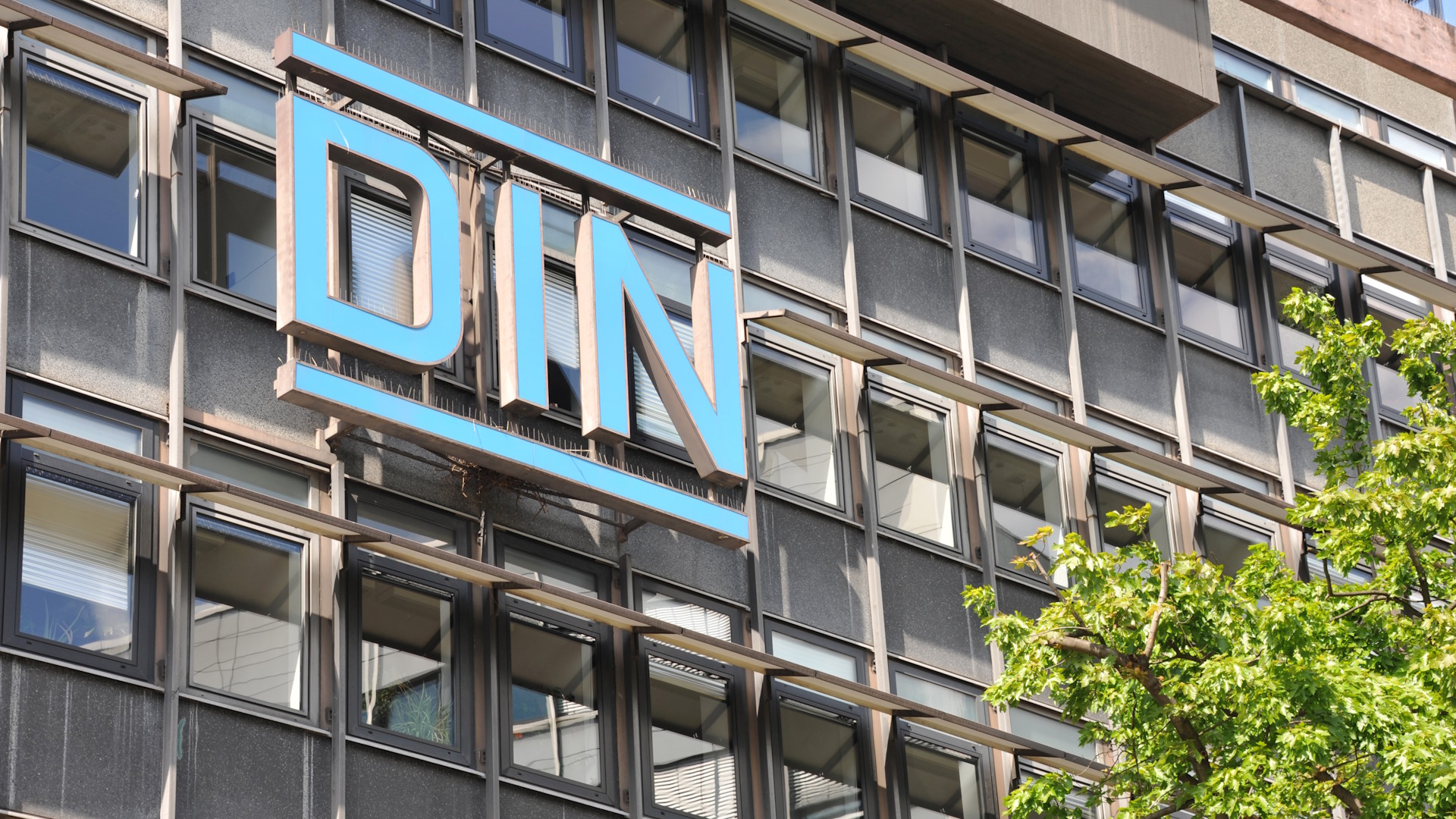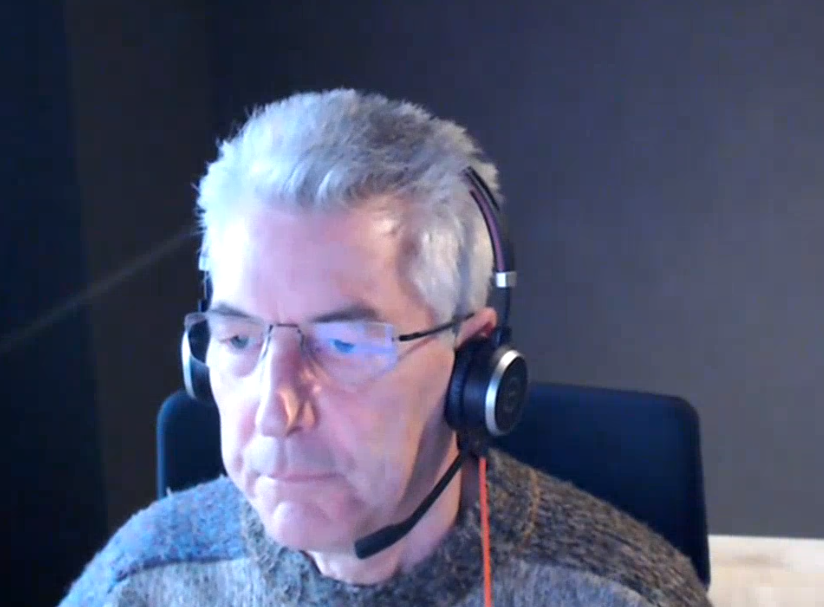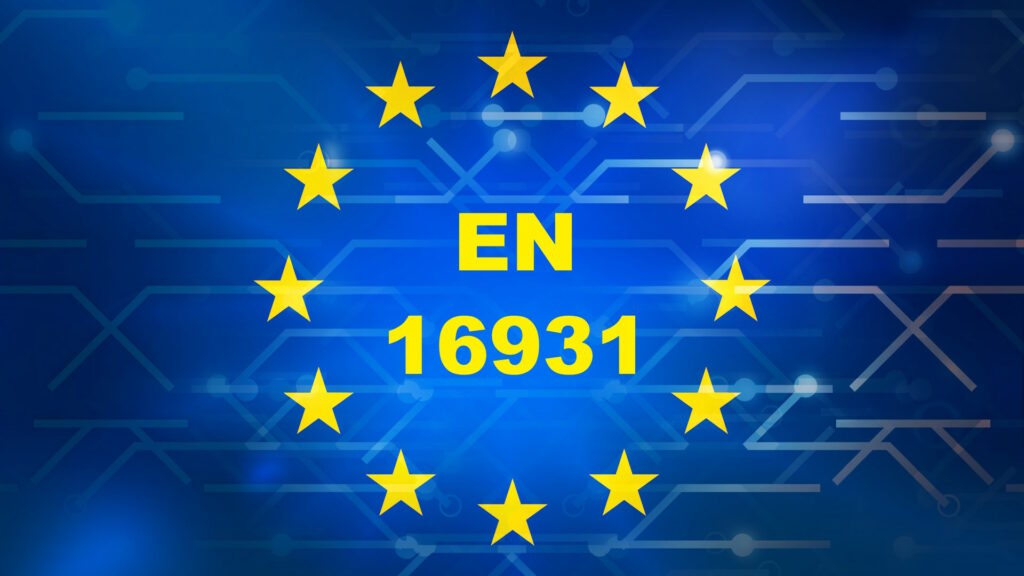People in e-invoicing
Interview - CEN TC 434 and the upcoming EN 16931 revision
This interview offers a deep dive into CEN TC 434, the European committee responsible for standardizing electronic invoicing.
We spoke with Paul Simons, convenor of Workgroup 1 in charge of the Core Semantic Data Model, as well as Pietro Palermo and Philip Helger, two other key contributors to the committee’s work.
The interview explores the goals and challenges of revising EN 16931, the rationale behind the updates, and the impact on interoperability across Europe and beyond. It sheds light on how the standard is evolving to meet new technological and regulatory needs.
Interviewees
Part One
Paul Simons, Convenor of CEN TC 434 - Working Group 1

Hello, Paul, and thank you for joining us for this interview.
Today, we’d like to focus on the work of CEN TC 434, which is responsible for developing e-invoicing standards—most notably the EN 16931. While the committee plays a vital role in shaping global e-invoicing practices, its work and members often remain behind the scenes.
This interview aims to bring more visibility to your efforts and shed light on the objectives and impact of your ongoing activities.
Hello, happy to be here and to answer your questions!
With your insights, we hope to gain a better understanding of the CEN TC 434, the people behind it, its mission, and your role as convenor. To begin, could you tell us what CEN TC 434 stands for?
CEN stands for Comité Européen de Normalisation (European Committee for Standardization) and is the organization responsible for standardization across the European Union. TC refers to a Technical Committee, and as you can tell from our number, 434, there are many of them. TC 434 is specifically focused on electronic invoicing.
Thank you for this needed explanation, Paul. Before we dive deeper into the TC 434 and its work, could you tell us a bit more about yourself and your background?
Of course. My name is Paul Simons, and I live near Brussels, Belgium. I currently work as an e-Ambassador at Wolters Kluwer, where I focus on enhancing our digital offerings for customers.
In addition to this role, I am actively involved in various industry groups and associations. Since 2018, I have been the Convenor of Working Group (WG) 1 within CEN TC 434, which we’ll discuss later I guess.
I also serve as the Chair of UBL.be, a Belgian non-profit that brings together key players in the electronic document sector, with the goal of developing, promoting, and disseminating standards.
And since 2019, I have also been leading the Peppol Post-Award Community (PoAC), where I work on improving interoperability and standardization in the post-award phase of e-procurement, such as analyzing and reviewing all the improvements that are implemented within the Peppol network.
I find this work truly exciting, which is why I am running for re-election, it’s a role I’m deeply committed to!
You mention “Post-Award”, can you briefly explain what it means?
Certainly! In a procurement cycle, there are two main phases: Pre-Award and Post-Award. The Pre-Award phase covers everything leading up to the selection of a supplier and a product (such as tendering, catalog management, and negotiations).
The Post-Award phase begins once the supplier has been chosen and awarded the contract. This phase includes ordering, invoicing, payments, and contract management.
Essentially, the “award” refers to the moment when a supplier or product is selected, marking the transition between these two phases.
« We have ve been working on the revision of EN 16931 for the past three years already. Over this time, we have reached consensus on most topics. »
Paul Simons
Well explained, thank you. It’s clear that your experience has long revolved around accounting and invoicing specifically. How did you get into this field, and what do you enjoy most about it?
I’ve always been drawn to the complexity of electronic invoicing and document process automation. It’s both a challenge and a fascinating area to work in. What’s happening today in Europe and globally with e-invoicing is also quite new and rapidly evolving, which makes it even more exciting.
My career has always revolved around software, tax, and accounting. Over the years, I’ve held roles as an IT architect, manager, and director at several software companies specializing in tax and accounting solutions. Moving into e-invoicing and standardization felt like a natural progression.
That makes a lot of sense. Now, let’s talk about CEN TC 434. We know it plays a significant role behind the scenes, but could you tell us more about its official mission?
CEN TC 434 is the Technical Committee responsible for the standardization of electronic invoicing in Europe. For those familiar with the topic, we are the committee that was taked to develop the European Norm (EN) 16931, which defines the semantic data model for e-invoices in the EU.
You mentioned that TC 434 was « tasked » with this mission. Who assigned this responsibility, and when?
CEN TC 434 was established in 2014 on request from the European Commission following the adoption of EU Directive 2014/55. This directive required public authorities across the EU to accept electronic invoices, but for that to work effectively, a common standard was needed. This led to the creation of EN 16931, ensuring a harmonized approach to e-invoicing across all EU member states.
So, TC 434 was given the responsibility of standardizing e-invoicing in Europe. In practical terms, who are the people working on this within the committee?
The TC 434 includes representatives from all EU member states. These members typically come from their country’s national standardization body, for example NBN in Belgium, DIN in Germany, and AFNOR in France.
Our members have diverse backgrounds: some are technical experts, while others specialize in accounting, taxation, or policy. Participation in the TC 434 is entirely voluntary, and we currently count around 25 active members.
We also sometimes invite guest speakers to provide insights on specific topics.
National standardization bodies: AFNOR in France, DIN in Germany, …
How do you meet? Does TC 434 have offices, for example, at the European Commission in Brussels?
While CEN is headquartered in Brussels, TC 434 doesn’t have dedicated offices there. In fact, all of our work happens online. We hold weekly virtual meetings, and once or twice a year, we organize a plenary session, which is hosted by one of our members, so there’s no fixed location.
However, we do have a secretariat, which is hosted in the Netherlands by NEN, the Dutch national standardization body.
Can you tell us more about the TC 434 is structured?
Yes, TC 434 is structured into multiple Working Groups (WGs), each focusing on a specific aspect of electronic invoicing. Currently, four Working Groups are active:
- WG1: Core semantic data model
- WG3: Syntax bindings
- WG5: Extension methodology
- WG7: Registry services
Each Working Group is responsible for producing deliverables related to its area of expertise. Personally, I am part of WG1, which focuses on the core semantic data model for e-invoicing.
What is your role within TC 434? You mentioned earlier that you are the Convenor of WG1. What does it consist in exactly?
As Convenor, my role is to organize the working group’s activities and discussions, plan meetings, and produce discussion reports. I ensure that we are making progress, that all relevant topics are addressed, and that everyone’s voice is heard. Essentially, I act as a facilitator, helping the group work efficiently and collaboratively.
What other roles exist within TC 434?
The Chair of TC 434, Andrea Caccia, is responsible for leading the committee’s work and coordinating all Convenors across the working groups.
Then, we have the workgroup members, who are the ones debating, analyzing, and shaping the standard.
Finally, there are editors whose mission is to document and formalize the work done by the TC, ensuring that key deliverables are properly structured and published.
Is it possible for anyone to join a CEN TC and one of its Working Groups?
Not quite. Although participation in the TC is voluntary, most members come directly from their national standardization bodies. These individuals are already deeply involved in local discussions, making them well-positioned to collect comprehensive feedback and propose solutions that address those needs.
With so many participants, opinions, and member states involved, debates must get quite intense. How do you reach decisions? Is that the Convenor’s role?
No, the Convenor doesn’t make decisions alone. We follow a consensus-based approach: all voices must be heard, and all member states must agree before a decision is made.
The challenge is always to find a balanced solution that satisfies as many needs as possible while keeping things practical and effective.
What are the current projects being worked on at CEN TC 434?
At WG1, our main focus right now is the revision of EN 16931. Lately, the use of EN 16931 has expanded to B2B scenarios, which means new data elements are needed in invoices to support these use cases.
Additionally, with the recent adoption of the ViDA directive, we must also incorporate e-reporting requirements into the standard.
Our discussions are nearly complete: we have one final meeting, after which member states will proceed to the vote.
« One of the key challenges we always keep in mind is ensuring that Small and Medium Enterprises (SMEs) can adopt the standard at a low cost.
This is a fundamental objective of both the EU 2014/55 Directive and EN 16931. »Paul Simons
This is great, many people are eager to see how the new standard will address their needs and how it will be implemented across member states. It’s impressive how quickly this is moving, considering the ViDA directive was only agreed upon at the end of 2024.
Actually, we’ve been working on the revision of EN 16931 for the past three years already. Over this time, we’ve reached consensus on most topics. For the remaining open discussions, the recent adoption of ViDA played a crucial role, as it helped align perspectives across member states and push everyone toward a common solution.
What about the other working groups, what are they currently focusing on?
Another key topic being worked on at the TC 434 is the extensions for specific countries and/or industrial sectors.
Indeed, invoices have been sent for years in multiple formats while at the same time having to comply with national and international rules like VAT. These rules are not harmonized making it complex to find a standard that satisfies all requirements and at the same time keeping it simple to use and implement.
So the goal of the TC 434 is to standardize the way to deal with those rules through a common library of EN 16931 Extensions available publicly for free.
The diversity of rules and formats has indeed always been a significant barrier to widespread adoption. Standardizing these aspects must lead to intense discussions within the TC. Are there any other challenges you face?
Absolutely. One of the key challenges we always keep in mind is ensuring that Small and Medium Enterprises (SMEs) can adopt the standard at a low cost. This is a fundamental objective of both the EU 2014/55 Directive and EN 16931.
That’s why the EN 16931 standard defines a « core invoice » model, a common foundation that covers most businesses’ needs.
More complex situations are then handled through CIUS (Core Invoice Usage Specifications) and Extensions, allowing for adaptability without unnecessary complexity.
That gives us a clearer picture of the work being done at TC 434. One last question: how can people reach out to CEN TC 434 to discuss specific invoicing topics they’d like to see addressed or standardized?
The best way is to contact your national standardization body. They can relay your input through their representatives at TC 434, ensuring that your concerns are discussed within the group.
Thank you, Paul, for your time and all the insights you’ve shared with us.
Thank you!
Part Two
Pietro Palermo, CEN TC 434 member

Hello Pietro, and thank you for joining us today. To start things off, could you briefly introduce yourself and tell us about your background?
Hello and thank you for interviewing me !
I am a consultant at Deloitte, and I’ve been a member of the CEN TC 434 since 2019 on behalf of Intercent, which is the regional public body responsible for public procurement in Emilia-Romagna. But in fact, my collaboration with TC434 began even earlier, back in 2014, and I’ve been working in the field of public procurement and e-invoicing for quite some time now, around 2010 actually
My work covers the full procurement cycle—both pre-award and post-award phases, and over the years, I’ve become deeply involved in European standardization efforts. I’m also a member of CEN Technical Committee 440, which focuses on standardizing public procurement processes, where I currently serve as the Convenor of the working group responsible for specifications in eOrdering. I’m also involved in TC 434, particularly in working groups 1 (semantic data models) and 3 (extensions).
I am also involved in the Italian CIUS and extensions « format » used by the Italian Tax Agency, and I work on helping the Italian Peppol Authority to evolve the Peppol specifications for the Italian context.
You are a member of TC 434 and TC 440. What motivated you to join those ?
I joined CEN TC 434 and 440 because I wanted to have a direct impact on European policy and bring my practical experience into the standardization process. Italy was already a mature environment in this field, and I saw an opportunity to help align national practices with European norms. Even now, some local requirements aren’t fully covered by the standards, and my goal is to help integrate those into the European framework.
There is also the context of the ViDA directive. EN 16931 was originally developed with B2G transactions in mind, leaving many B2B scenarios insufficiently addressed. On the other hand, those B2B scenarios are better managed by the Italian standard, « FatturaPA ». ViDA, with its strong focus on B2B, has been instrumental in pushing the European norm to evolve, and to also be more in line with what we had already implemented in Italy.
I’m pleased with the ongoing revision of the EN 16931, which now support more complex situations such as, by instance, the reference to multiple orders or deliveries or invoices with both lines under the scope of VAT and lines out of scope—key elements for addressing real-world business requirements.
« I estimate that the new version of the EN 16931 should be published in the second half of 2026. »
Pietro Palermo
What impact will the new version of EN 16931 have at the Italian level?
The primary impact is that once the new version of EN 16931 is released, the extensions created for the Italian context will become redundant, as most of the « Italian » requirement not covered today by the EN 16931:2017 will be incorporated into the standard.
However, until 2035, when all member states e-invoicing formats must be harmonized, both the European invoice and the FatturaPA format will continue to coexist in the Italian environment.
Thank you for those insights! Now, let’s focus on CEN TC 434. What’s your experience as a member of a working group? Do you think the TC is meeting its objectives, or is it complicated, due for example to the diverse backgrounds, cultures, and goals of its members?
It’s a tough job but Paul Simons is doing a great job as a convenor.
One of the main difficulties has been balancing the different perspectives, as some countries wanted to include everything in the standard. But not every use case is necessary or practical to include, so there’s been a lot of discussion to ensure the norm covers the most common and relevant scenarios, without trying to handle every possible edge case.
For example, many times, we were told that our requirements were « Italian » requirements and that it was correct not to support them with the norm. But we had the opportunity to demonstrate that they were actually common cases, and not Italian specific, and they were integrated into the EN 16931 revision !
Despite those challenges, I believe the group has done a great job and has largely fulfilled its objectives. The new version of the standard is nearly complete, and we’re working under tight timelines to align with the ViDA initiative.
Can you share any approximate timelines for when the new version of EN 16931 is expected to be finalized and published?
We’re now in the final stages and I estimate that the new version of the EN 16931 should be published in the second half of 2026.
First, we finalized the draft within the working group through an internal balloting. Then, at the TC level, we’ll move into the inquiry phase, which will last about 4–5 months, followed by a 2-month period to address comments, and, finally, another 4-month period for the formal vote.
So, things are moving, and we’re clearly in the final stretch. That said, works still continue in WG3 (Extensions) on specific aspects.
Thank you for taking part in this interview, Pietro. It’s been a pleasure having you and learning from your insights.
Thank you! And I’d like to emphasize how important it is for businesses to understand what’s happening and how it will impact them, especially regarding the ViDA directive and the EN 16931 revision. So I really appreciate this opportunity to shed light on the work of CEN TC 434, what it has achieved, and what it continues to do.
Part Three
Philip Helger, CEN TC 434 member

Hello Philip and thank you for being with us to talk about CEN TC 434 and the upcoming revision of EN 16931. To kick things off, could you tell us a bit about yourself and your professional background?
Hello, of course! I was working at the Federal Computing Center, a public administration in Austria, when the European PEPPOL project emerged in 2008. I joined as a technical expert. With a background in technology, and being one of the few in the organization who spoke English and was open to traveling, I ended up joining the initiative and contributed for the full three and a half years.
Afterwards I led the development of the B2G e-invoicing portal, now known as e-rechnung.gv.at, which was mandated by law in 2014. I stayed there until 2019, but as the administration’s priorities shifted away from e-invoicing, I decided to become a freelancer to stay active in this domain.
Thank you! And as we’ve asked the other interviewees as well, how did you come to join the CEN TC 434?
Austria is a relatively small country, and after the launch of the B2G portal in 2014, the Ministry of Finance didn’t see much need to go further with e-invoicing, so things didn’t really progress.
Within Austria, the main interest in e-invoicing came from the ebInterface and AustriaPro communities. Most of the people involved were from the private sector, whereas I was originally one of the few public administration persons (and later freelancer) with the relevant expertise.
That’s how I ended up representing Austria at CEN TC 434. I contributed to the initial development of EN 16931 and, rejoined the TC again in 2023 for its revision.
What can you tell us about the CEN TC 434? What is your role within its working groups?
I’m a member of several working groups within CEN TC 434: WG1 on the semantic data model, WG3 on syntax bindings, and WG5 on extensions.
WG1 is the most crucial one—it serves as the « source of truth ». It’s responsible for developing the core content of the EN 16931 revision, which the other groups then adapt to their specific scopes.
The aim of the revision is to expand the scope of the standard to better address typical B2B scenarios. Some topics are relatively simple to resolve, while others can take weeks of detailed discussion to reach consensus.
In this context, I contributed topics like tolerances and rounding rules. I proposed a solution that was first aligned with Austrian stakeholders (government representatives, the national standards body, and others) before being presented to the rest of TC 434, where it was finally accepted.
« The ViDA initiative has brought renewed attention to e-invoicing »
Philip Helger
The new version of EN 16931 is almost finalized for CEN TC 434, but what comes next? Are there additional projects lined up?
Yes, the revision of EN 16931 has reached a feature-complete stage, but it still needs to undergo a formal vote by the member states. Each national standardization body is responsible for submitting the draft to its respectives for approval. If some countries reject the proposal, it means we will need to get back to the drawing table!
Once the revision is officially adopted, WG3 (syntax bindings) and WG5 (extensions) will continue their efforts to update their deliverables in line with the new version of EN 16931, aiming to ensure compatibility and flexibility.
After that, the focus will shift to determining how to create and publish the extension library, so all relevant stakeholders can benefit from it.
What is your opinion on how the TC 434 operates? Do you consider it is meeting its objectives?
TC 434 is performing well, with a stable and experienced group of members. There’s a wide range of expertise across various fields, such as legal, technical, and accounting, which adds significant value. However, the composition of the group may be somewhat imbalanced, with certain countries being more heavily represented.
The work is progressing at a correct pace, considering the significant impact of the decisions being made: after all, we’re dealing with changes that will affect millions of businesses in Europe and beyond. It’s essential to be thorough to ensure the best outcomes. In many cases, both sides of an argument are valid, so decisions are carefully made to balance and consider all perspectives.
Ultimately, the effectiveness of the TC is largely determined by its members, and I believe it functions well, especially given that all participants contribute voluntarily, alongside their regular jobs, without financial compensation.
The revision of the EN 16931 is coming: could you share some of the major changes it will bring?
Well, it’s not definitive yet, as it depends on the vote! But some of the key changes that will most likely be included are:
- The ability to link multiple orders and deliveries to a single invoice has been a long-standing request from various member states, sectors, and companies. However, it will have significant implications for invoice recipients, who must be equipped to process this information. In the past, this practice was carried out through mutual agreement between the sender and receiver, but with the EN 16931 revision, any company will need to implement it independently.
- The option to mark single items as « outside of scope of tax » at the line-item level, rather than just at the invoice level, which increases the total amount of the invoice but not the taxable amount. In Austria, we refer to those items as « below-the-line items ».
- The structured inclusion of early payment discounts.
There will be impacts at the Peppol level too, as Peppol will develop BIS 4.0, which will incorporate both PINT (Peppol INTernational format) and the revised EN 16931.
Those are indeed important developments, thank you for highlighting them. To wrap up this interview, let’s turn to your home country: Austria. How is e-invoicing progressing there, and what impact do you foresee from the ViDA initiative and the upcoming revision of EN 16931?
The ViDA initiative has brought renewed attention to e-invoicing, and, as is often the case, Austria tends to look to Germany before making its own decisions.
Germany has chosen to allow the use of, among others, hybrid formats (PDF with embedded XML), such as ZuGFeRD, in its mandate. While this approach addresses some problems, it also introduces more new problems. As a result, Austria is adopting a cautious, wait-and-see stance to observe how things unfold in Germany.
In short, I don’t expect significant progress in Austria for the next few years, most likely not until Germany has fully transitioned to e-invoicing and Austria can build its own roadmap based on that experience.
Thank you, Philip, for answering our questions! Anything you would like to add ?
Yes I would like to point that the work we’re doing at CEN TC 434 is important, and there’s always room for improvement. However, it’s sad that the intellectual property policies of CEN are so strict, limiting the opportunity to gather more feedback from stakeholders across Europe.
More generally, standards, especially those referenced in legislation, should be freely accessible to everyone.
European Norm 16931
Learn more in our E-Invoicing Essentials article about the European Norm 16931:
- The EN 16931 in the Context of E-Invoicing
- Origin of the norm
- The “Core Invoice”
- Mappings to Compliant Invoice Syntaxes (or “Syntax Bindings”)
- CIUS & Extensions
- Challenges
- How to comply
- Retrieve the Official Documentation
- Future of E-Invoicing with the EN 16931
Discover our Sponsors
With connections to 31 countries and growing, we are continuously adding more countries to enhance our e-invoicing solutions, striving for full global coverage and compliance with each country's tax regulations.
Latest News
Modernise invoice compliance to unlock value
Fresh publications further clarify France’s 2026 e-invoicing requirements
Storecove strengthens global presence with new office in New York
E-Invoicing Compliance in Greece: The Complete Guide
Whitepaper – The Global Shift to e-Invoicing
The Invoicing Hub
experts can help you
Strategy, Guidance, Training, …


